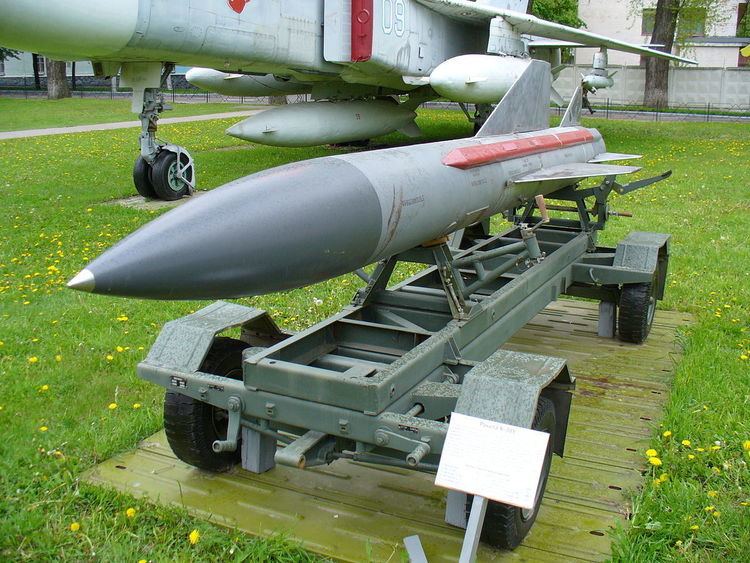Designed 1970s | In service 1982-current | |
 | ||
Wars Russo-Georgian WarIran-Iraq War | ||
The Kh-58 (Russian: Х-58; NATO:AS-11 'Kilter') is a Soviet anti-radiation missile with a range of 120 km. As of 2004 the Kh-58U variant was still the primary anti-radiation missile of Russia and its allies. It is being superseded by the Kh-31. The NATO reporting name is "Kilter", after a pixie in the 1902 book The Life and Adventures of Santa Claus by L. Frank Baum.
Contents
Development
The Bereznyak design bureau had developed the liquid-fuelled Kh-28 (AS-9 'Kyle) and the KSR-5P anti-radiation missiles. They merged with Raduga in 1967, so Raduga was given the contract in the early 1970s to develop a solid-fuel successor to the Kh-28 to equip the new Su-24M 'Fencer-D' attack aircraft. Consequently the project was initially designated the Kh-24, before becoming the Kh-58.
During the 1980s a longer-range variant was developed, the Kh-58U, with lock-on-after-launch capability. Since the fall of the Soviet Union, Raduga have offered several versions for export.
Design
It was designed to be used in conjunction with the Su-24's L-086A "Fantasmagoria A" or L-086B "Fantasmagoria B" target acquisition system. The range achieved depends heavily on the launch altitude, thus the original Kh-58 has a range of 36 km from low level, 120 km from 10,000 m (32,800 ft), and 160 km from 15,000 m (49,200 ft).
Like other Soviet missiles of the time, the Kh-58 could be fitted with a range of seeker heads designed to target specific air defence radars such as MIM-14 Nike-Hercules or MIM-104 Patriot.
Operational history
The Kh-58 was deployed in 1982 on the Su-24M 'Fencer D' in Soviet service. The Kh-58U entered service in 1991 on the Su-24M and Mig-25BM 'Foxbat-F'. The Kh-58E version can be carried on the Su-22M4 and Su-25TK as well, whilst the Kh-58UshE appears to be intended for Chinese Su-30MKK's.
Variants
Some Western sources have referred to a Kh-58A that is either optimised for naval radars or has an active seeker head for use as an anti-shipping missile - it probably represents another name for the Kh-58U.
